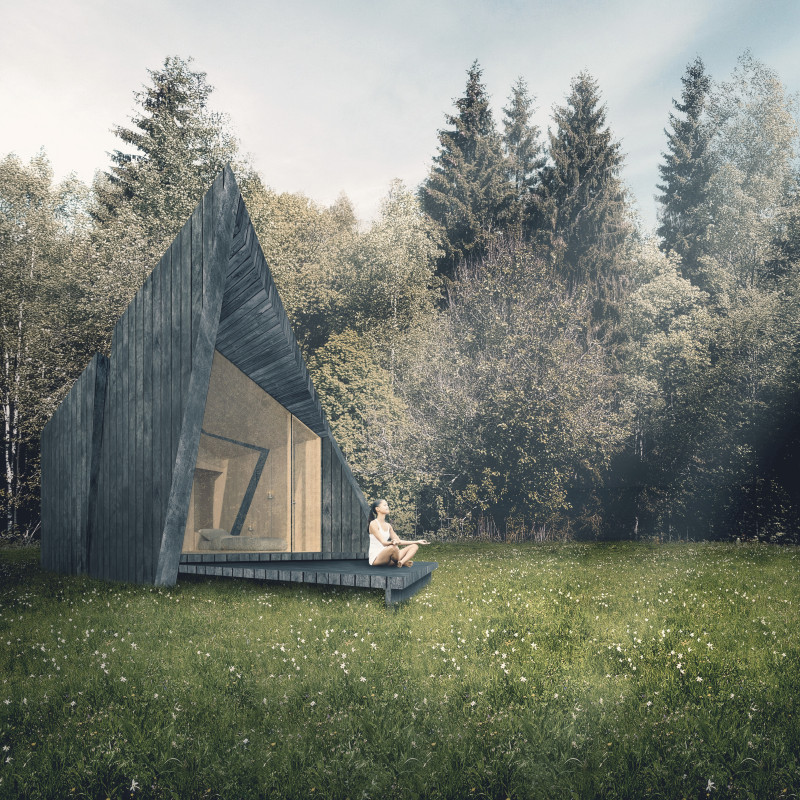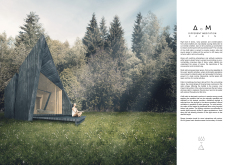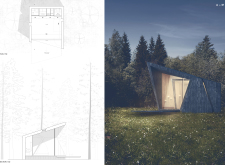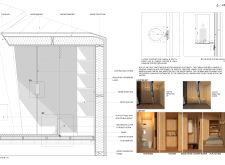5 key facts about this project
The AOM cabin is an architectural design located in the peaceful Latvian forest. It serves as a retreat from the challenges of modern urban life, aiming to foster mental well-being in a tranquil setting. The design centers on creating a quiet and safe space that encourages reflection and relaxation, closely aligning with the natural environment.
Architectural Concept
The cabin is built to promote a calming atmosphere, responding to issues of stress and the need for environmental awareness. The layout includes a central area dedicated to mental activities, while everyday functions are organized within a series of cabinets. This design choice enhances the functionality of the space, all while keeping a clean and minimalist look.
Spatial Configuration
Drawing inspiration from the surrounding pine trees, the shape of the cabin resembles conical forms that blend with the landscape. This design helps reduce any visual disturbance, allowing the building to fit naturally within its setting. The geometric simplicity fosters a connection between the occupants and their environment, encouraging a deeper appreciation for the nature that surrounds them.
Environmental Control
The cabin focuses on practical solutions for heating and lighting. It operates in passive energy mode, which means users can manually adjust the interior climate to suit their needs. Skylights are carefully placed to bring in natural light, while side openings create opportunities for fresh air, maintaining comfort throughout different seasons.
Lighting and Interior Interaction
Candle lights enclosed in glass candelabra add both function and charm to the space. These lights can be directed along a rail, providing flexibility in the illumination. The extensive glass facade allows for constant interaction with the outdoors, making it feel as though nature is part of the cabin. The design encourages occupants to engage with the forest, making the experience more immersive.
The full glass facade not only floods the interior with light but also facilitates a strong connection to the forest, emphasizing the integration of living space with the natural world.






















































